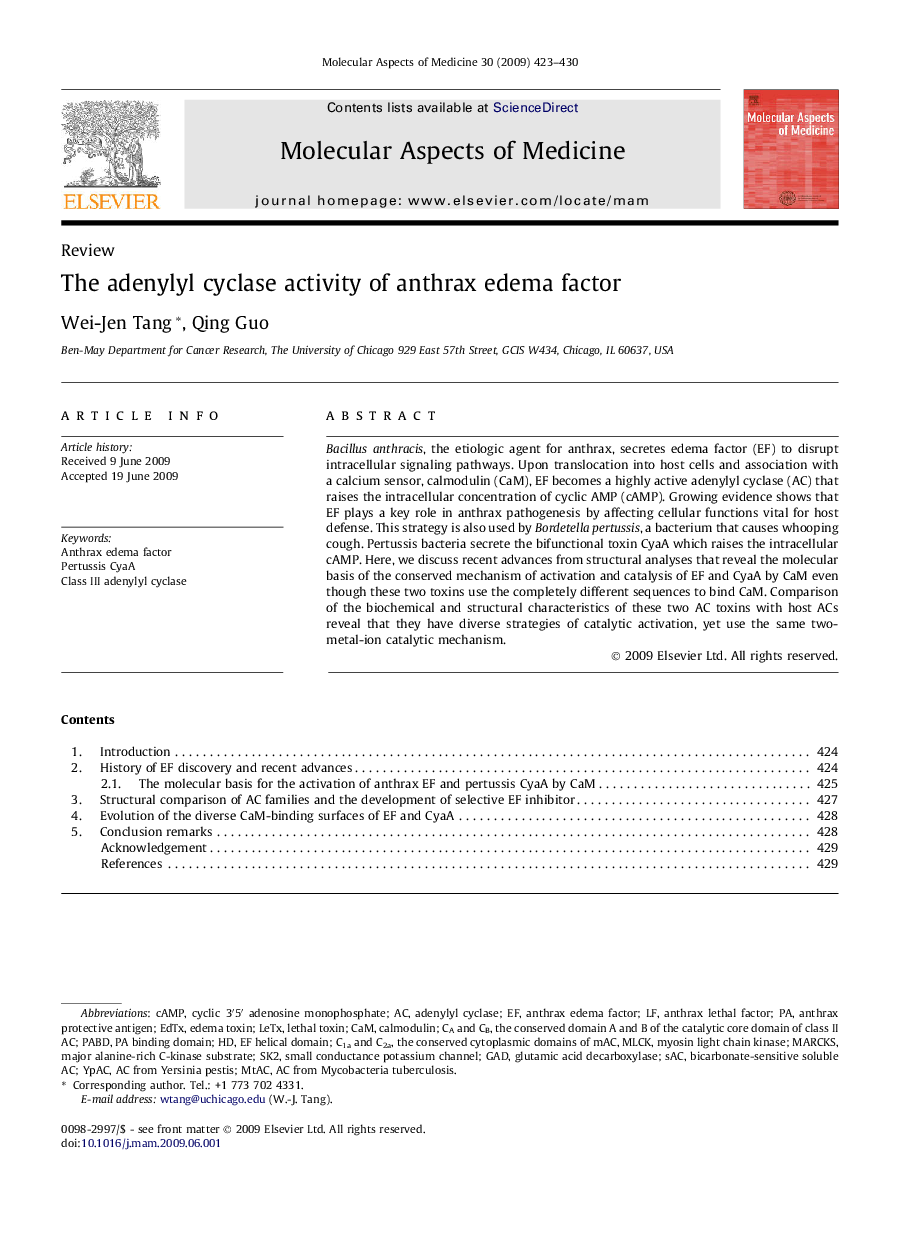| Article ID | Journal | Published Year | Pages | File Type |
|---|---|---|---|---|
| 1995749 | Molecular Aspects of Medicine | 2009 | 8 Pages |
Bacillus anthracis, the etiologic agent for anthrax, secretes edema factor (EF) to disrupt intracellular signaling pathways. Upon translocation into host cells and association with a calcium sensor, calmodulin (CaM), EF becomes a highly active adenylyl cyclase (AC) that raises the intracellular concentration of cyclic AMP (cAMP). Growing evidence shows that EF plays a key role in anthrax pathogenesis by affecting cellular functions vital for host defense. This strategy is also used by Bordetella pertussis, a bacterium that causes whooping cough. Pertussis bacteria secrete the bifunctional toxin CyaA which raises the intracellular cAMP. Here, we discuss recent advances from structural analyses that reveal the molecular basis of the conserved mechanism of activation and catalysis of EF and CyaA by CaM even though these two toxins use the completely different sequences to bind CaM. Comparison of the biochemical and structural characteristics of these two AC toxins with host ACs reveal that they have diverse strategies of catalytic activation, yet use the same two-metal-ion catalytic mechanism.
